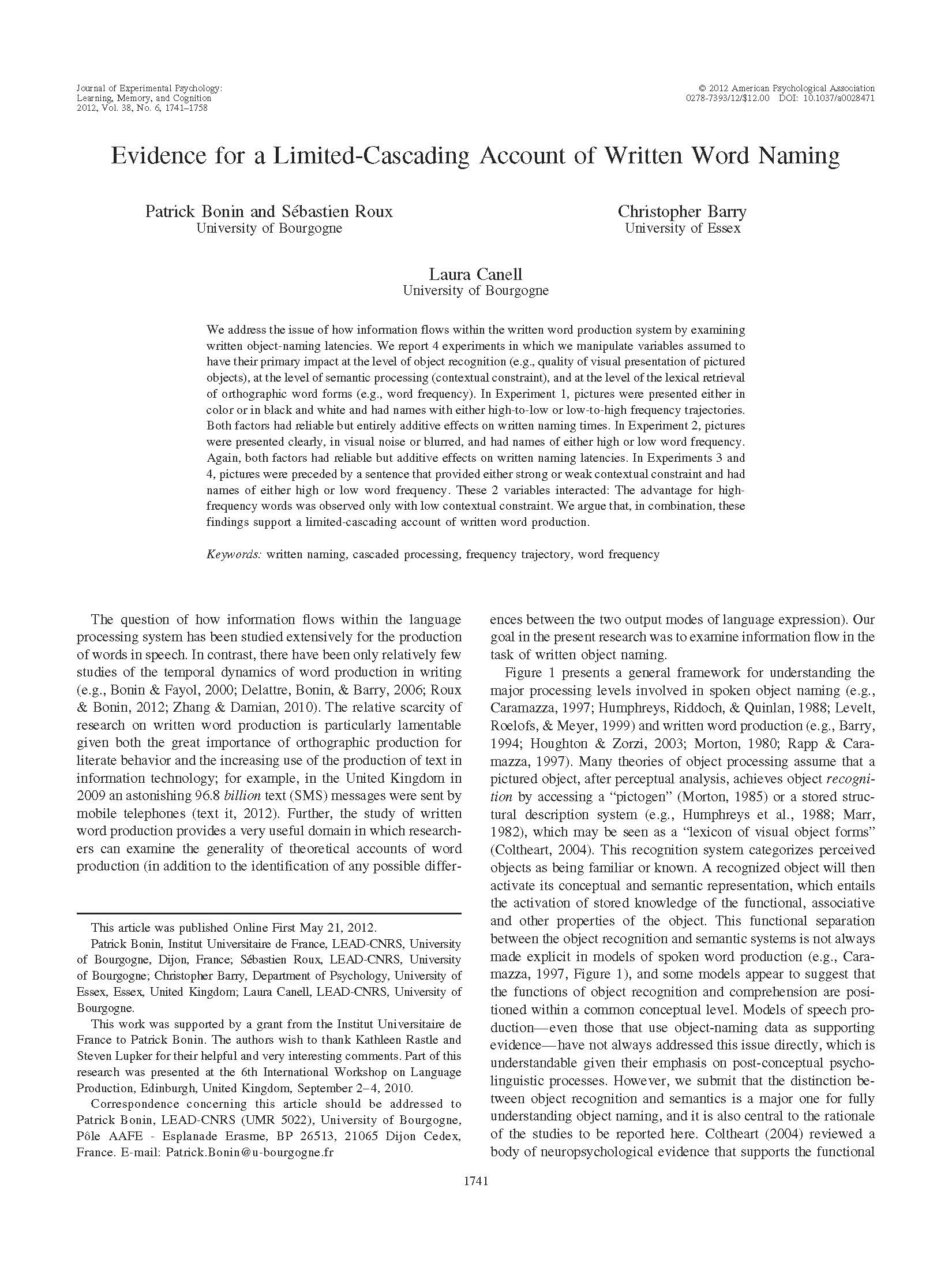We address the issue of how information flows within the written word production system by examining
written object-naming latencies. We report 4 experiments in which we manipulate variables assumed to
have their primary impact at the level of object recognition (e.g., quality of visual presentation of pictured objects), at the level of semantic processing (contextual constraint), and at the level of the lexical retrieval of orthographic word forms (e.g., word frequency). In Experiment 1, pictures were presented either in color or in black and white and had names with either high-to-low or low-to-high frequency trajectories. Both factors had reliable but entirely additive effects on written naming times. In Experiment 2, pictures were presented clearly, in visual noise or blurred, and had names of either high or low word frequency. Again, both factors had reliable but additive effects on written naming latencies. In Experiments 3 and 4, pictures were preceded by a sentence that provided either strong or weak contextual constraint and had names of either high or low word frequency. These 2 variables interacted: The advantage for highfrequency words was observed only with low contextual constraint. We argue that, in combination, these findings support a limited-cascading account of written word production.
Evidence for a limited-cascading account of written word naming
